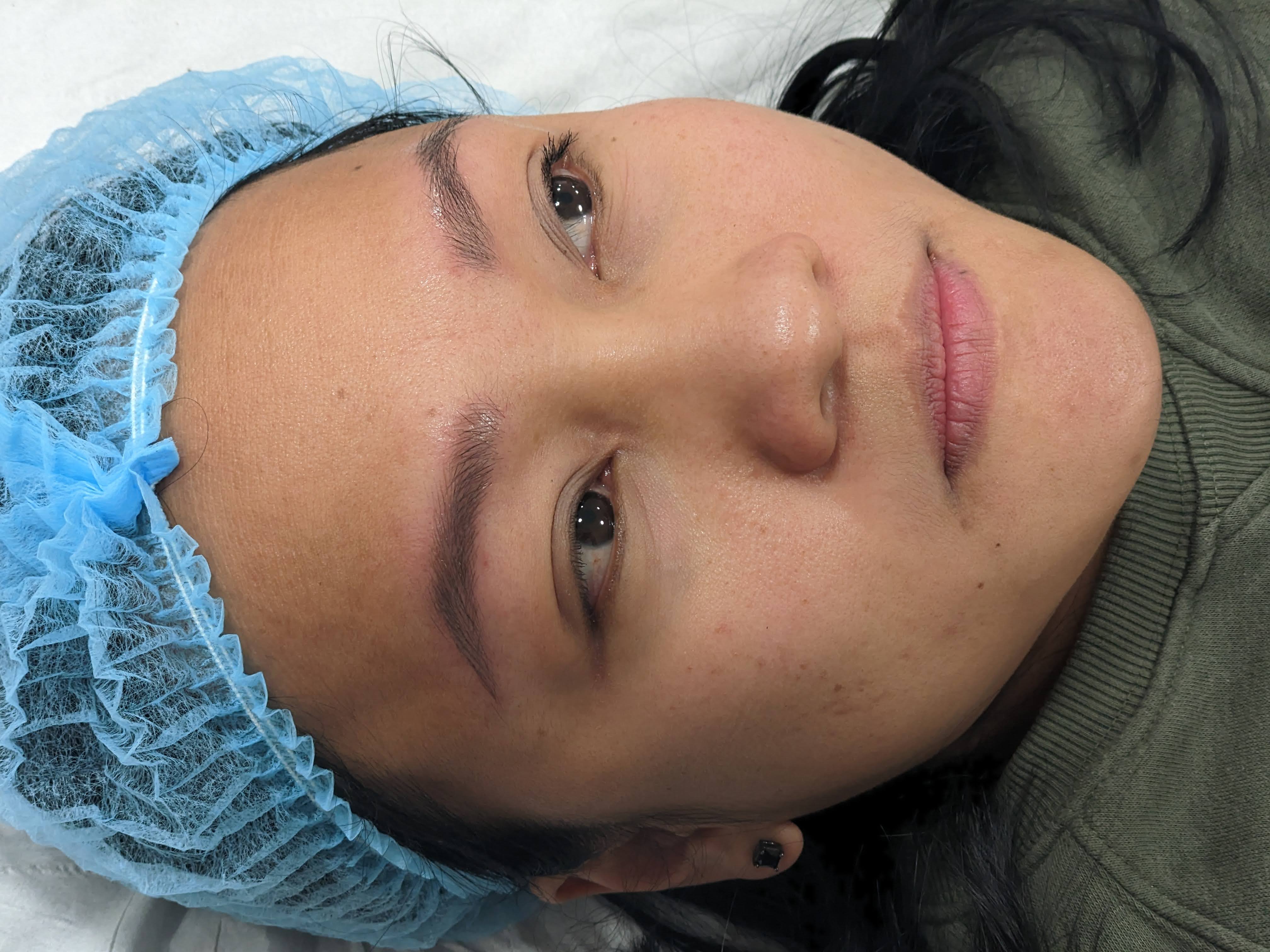Early Summer Sale is ending soon. VIEW OFFER

Are you all set to kick off your journey as a microblading artist? But before you start crafting those beautiful brows, let’s take a moment to ensure you’re equipped with some invaluable insights that will steer you toward success. These tips might seem straightforward, yet their application can make all the difference in shaping your career journey for years to come. So, let’s delve into these pearls of wisdom that will serve as your guide on this thrilling adventure into the world of microblading.
Keep this in mind, your business thrives on making people look and feel their best. If you can’t achieve that, you won’t have any customers. To succeed, you need to become really good at what you do. If your work isn’t up to scratch, Clients won’t come back to you. That’s why it’s essential to get top-notch training. Let’s break it down.

Before you commit to a microblading course, take the time to familiarise yourself with the fundamentals of the technique. Watch tutorial videos, read articles, and explore resources that explain the process of microblading in detail. Understanding how microblading works, the tools involved, and the expected results will give you a solid foundation before you start your training.
Choosing the right microblading training provider is is very important. Look for institutions that are accredited by reputable organizations like VTCT or ABT. VTCT Accredited microblading courses ensure that you receive high-quality education and meet industry standards.

When mastering microblading, expect to make mistakes—it’s all part of the learning process. Don’t let initial failures discourage you; instead, use them as opportunities to improve.
Having a supportive mentor by your side can be invaluable in the early stages of your career. Look for someone who will be there for your first appointment, answering questions and offering guidance as you work with your first client. It’s important to find a mentor who is patient and encourages you to trust in your abilities while also allowing you to develop independence. However, avoid becoming too reliant on others. Pay attention to feedback from your tutor.
When choosing a microblading courses, look for one with a structured curriculum covering theory and hands-on practice. Prioritise programmes offering ample supervised practice and individualised feedback. Seek ongoing support and mentorship for career development. Ensure the programme is accredited and provides certification for credibility as a microblading artist.
So, we’ve covered your skills, but remember, in microblading, you use tools too. They’re crucial for getting the best results. In art, they say it’s not just about the tools, but how you use them. But in microblading, you’re working on people’s skin, not a canvas you can toss if it doesn’t turn out well. Microblading is semi-permanent, so mistakes can stick around for years. While there’s an option for correction, it’s best to get it right from the start.
The products you use before and after the procedure can affect your client’s skin and the quality of your work. Here are some key things to think about:
Pigment: Using good-quality pigments ensures you get the right colour for your client’s eyebrows. Cheaper options may not give the desired results.
PMU Machines: Some machines are better for beginners, while others suit experienced artists who want to try different techniques.
Disposables: At MicroBladers Studio + Academy, we use disposable needles, gloves, masks, and bed covers for each client. It’s important for hygiene, especially since tattoo artists, including PMU artists, are considered high-risk for infectious diseases.
Blades: The blades on your microblading pen serve two purposes: creating micro-incisions and inserting pigment. Learn about different needle points and sizes to create different hair strokes.Mastering microblading through training in the UK takes time and dedication. The cost of training can vary, so it’s essential to compare prices. Look for accredited courses with good reviews and testimonials. Consider factors like training duration, curriculum, and materials provided. You can find courses online or near you, depending on your preference. Before enrolling, check the course requirements and regulations to ensure they meet your needs. Look for the best trainers available to guide you through the process. Microblading certification opens up various career opportunities, so it’s worth investing in quality training. If you’re new to microblading, a beginner’s guide can help you get started. Workshops and apprenticeships are also valuable options for hands-on learning. Remember, patience and practice are key to mastering this art form.
Mastering microblading through training in the UK takes time and dedication. The cost of training can vary, so it’s essential to compare prices. Look for accredited courses with good reviews and testimonials. Consider factors like training duration, curriculum, and materials provided. Before enrolling, check the course requirements and regulations to ensure they meet your needs. Look for the best trainers available to guide you through the process. Microblading certification opens up various career opportunities, so it’s worth investing in quality training. If you’re new to microblading, a beginner’s guide can help you get started. Workshops and apprenticeships are also valuable options for hands-on learning. Remember, patience and practice are key to mastering this art form.
Once you’ve completed your microblading training , it’s important to recognize that it’s merely the first step in your journey. To maintain a competitive edge in the industry, it’s crucial to continue investing in your professional development. Seek out mentorship opportunities where you can learn from experienced practitioners, attend advanced training courses to refine your skills further, and make a concerted effort to stay abreast of the latest trends and techniques in microblading.
Additionally, building a supportive network of fellow microblading artists and industry professionals can provide you with invaluable guidance and encouragement as you progress in your career. Whether it’s sharing tips, troubleshooting challenges, or simply offering moral support, having a community of like-minded individuals can make a significant difference in your growth and success as a microblading artist.
By diligently following these steps, you’ll be well-equipped to navigate your microblading training journey with confidence and determination. Remember, achieving excellence in microblading requires not only talent and dedication but also a commitment to continuous learning and improvement. So, roll up your sleeves, sharpen those blades, and get ready to create stunning brows that leave your clients feeling empowered and beautiful!
In wrapping up, starting your microblading training journey opens doors to a promising career in the beauty industry. Alongside the excitement of learning this craft, it’s important to know How much can you earn as a microblading artist.
With the growing demand for flawlessly shaped eyebrows, microblading has become a highly sought-after service, commanding premium prices. As a skilled microblading technician, you have the chance to tap into this trend and establish a successful business that not only brings financial stability but also personal satisfaction.
Subscribe now to keep reading and get access to the full archive.